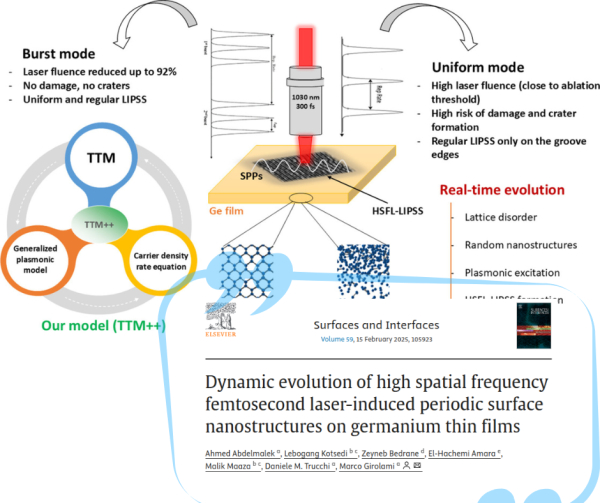Germanium, one of the first semiconductors historically employed for electronic devices, has recently re-gained attention in the field of mid-infrared imaging technique, where femtosecond laser can be used for optimal polishing of Ge optical substrates.
CNR-ISM, in collaboration with the University of Tlemcen (Algeria), has developed a theoretical model able to dynamically track the evolution of high-spatial-frequency laser-induced periodic nanostructures in Germanium thin films.
The model, named as TTM++, uses a doubly extended two-temperature model coupled with a carrier density rate equation and a generalized plasmonic model, and can be applied to all bandgap materials. In addition, the feasibility of a novel low-fluence irradiation method (“burst” mode) is applied to Germanium for the first time, enhancing the control on the laser-induced surface modification while minimizing thermal damage.
Wednesday, 02 April 2025 09:31
Dynamic evolution of high spatial frequency femtosecond laser-induced periodic surface nanostructures on Germanium thin films - New article
The paper presents a comprehensive theoretical study of the mechanisms underlying the formation of high-spatial-frequency periodic nanostructures (HSFL-LIPSS) induced by 300 fs laser pulses on crystalline Germanium thin films, allowing to identify the physical phenomena that occur in the very early stages of the process.
In particular, HSFL-LIPSS are due to ultrafast processes such as non-thermal melting, in which the material lattice remains cold despite the change of state.
Article published in Surfaces and Interfaces.
Published in
Publications


 English (UK)
English (UK)  Italiano (Italia)
Italiano (Italia)